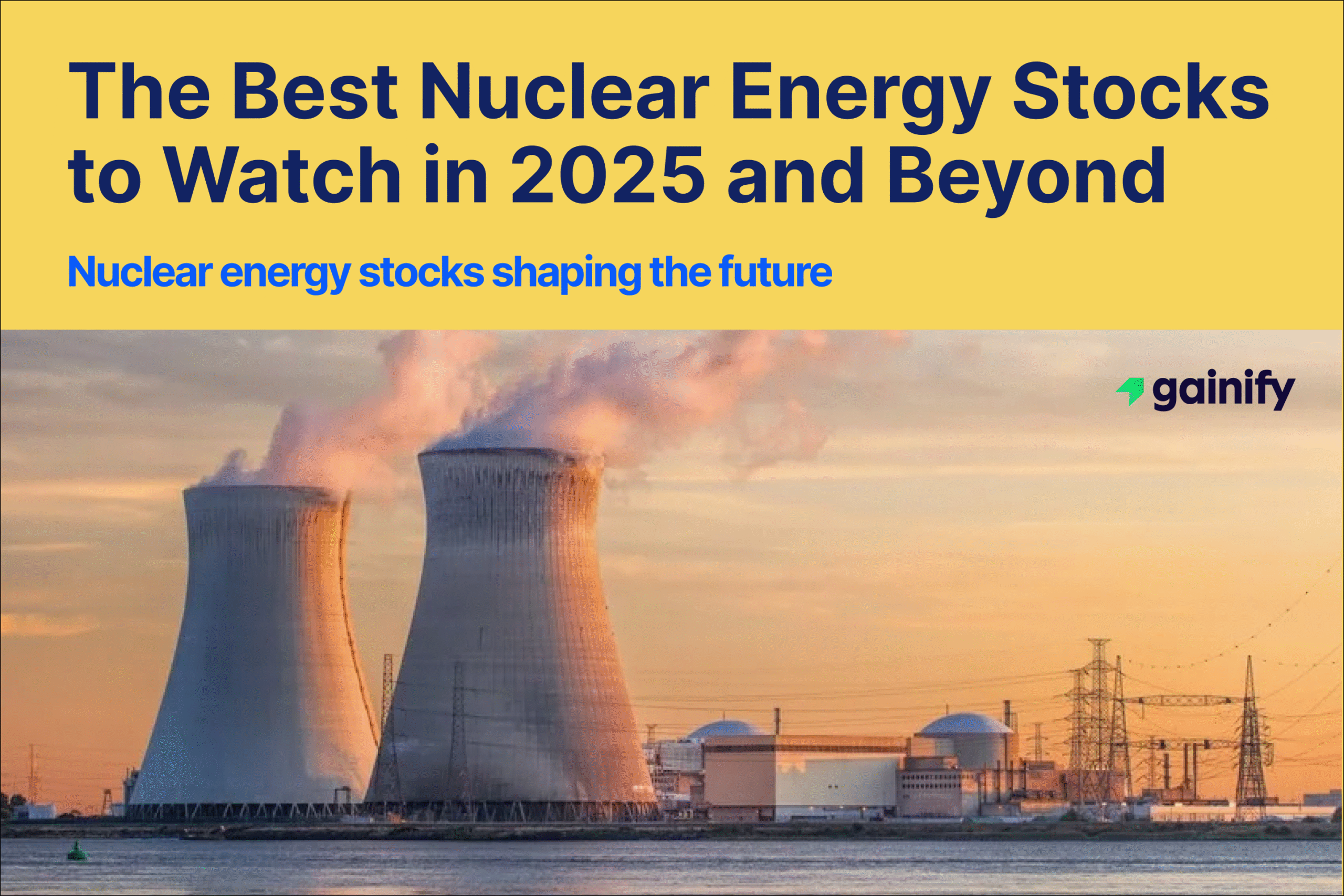The global energy landscape is undergoing a critical transformation, shaped by growing technological demands and evolving infrastructure needs.
Nuclear energy, long viewed with skepticism, is increasingly recognized as a vital component of a modern, secure, and scalable power system. This resurgence reflects more than a short-term reaction to market trends. It signals a deeper re-evaluation of nuclear power’s role in meeting future energy demands, particularly those driven by artificial intelligence and data-intensive technologies.
One of the most urgent pressures on the global power grid today is the exponential rise in electricity consumption from AI infrastructure. Data centers, especially those supporting generative AI models, require constant, high-capacity energy. Unlike intermittent renewable sources, nuclear power provides a stable baseload supply that can operate continuously, making it an ideal partner for these mission-critical operations. With tech giants such as Microsoft, Google, and Meta committing massive capital to AI infrastructure, their pursuit of nuclear-linked energy solutions is creating a powerful new demand driver for the sector.
The International Energy Agency (IEA) forecasts that global nuclear power generation will reach an all-time high in 2025, exceeding the previous peak set in 2021. This growth suggests not only recovery but a structural shift toward long-term nuclear adoption. The rising emphasis on energy security, infrastructure resilience, and technological scalability is creating favorable conditions for nuclear investment and policy support. As demand from AI compounds with geopolitical and economic concerns, the foundation for nuclear’s sustained relevance continues to strengthen.
This article explores the key companies poised to benefit from this nuclear revival. From uranium miners and enrichment specialists to advanced reactor developers and regulated utilities, we examine the players driving the next era of energy innovation. For investors seeking long-term opportunities supported by macro trends in digitalization, electrification, and infrastructure security, nuclear energy stands out as a strategic sector worthy of close attention.
The Resurgence of Nuclear Power: A Global Imperative
Decarbonization and Energy Security
As countries push toward net-zero emissions, nuclear energy is stepping into the spotlight. Unlike fossil fuels, nuclear plants produce virtually no greenhouse gases during operation. And unlike many renewables, they provide consistent power, day and night. This dual benefit makes nuclear one of the few technologies capable of supporting both environmental goals and industrial-scale energy needs.
Momentum is building globally:
- Over 30 nations have committed to tripling nuclear capacity by 2050
- International agreements, like the 2023 COP conference declaration, are creating shared targets
- These commitments provide a stable policy framework that supports large-scale investment
But the shift to nuclear isn’t only about climate. With recent geopolitical shocks and rising energy prices, governments are placing new emphasis on energy independence. Nuclear power, generated within national borders, is becoming a cornerstone of domestic energy resilience.
This evolving priority is visible in several ways:
- In the U.S., energy discussions now focus more on “national security” than generic “energy security”
- Nuclear is being classified as strategic infrastructure, opening the door for more direct government investment
- Accelerated approval timelines and funding mechanisms are being introduced to support the expansion of nuclear power
By meeting both environmental and national resilience objectives, nuclear power is gaining bipartisan support and attracting long-term capital – a sign of growing investor confidence.
The AI Energy Nexus
Artificial intelligence is driving an explosive increase in energy demand. Data centers that power AI models require constant, high-density electricity. Because renewable energy sources like wind and solar are intermittent, they alone cannot meet these growing demands.
Growth projections:
- Global data center electricity use is expected to grow at 16% annually (2023–2028).
- Generative AI demand is projected to grow by 65% annually.
- AI inference demand may rise 122% annually through 2028.
- Deloitte projects that U.S. data center power capacity will rise from 33 GW in 2024 to 176 GW by 2035.
This explosive demand highlights the need for reliable, round-the-clock power, making nuclear energy a practical and scalable solution.
Why nuclear fits:
- Capacity factor over 92%, compared to ~35% for wind and ~25% for solar.
- 24/7 availability is crucial for AI infrastructure uptime.
- Tech companies (Amazon, Google, Microsoft, Meta) are exploring direct nuclear partnerships.
- Nuclear is evolving from a utility-scale solution to a private-sector strategic energy resource.
Governmental Tailwinds
Governments around the world are backing nuclear energy with targeted policy and financial support. These initiatives are designed to simplify regulations, support reactor innovation, and secure domestic supply chains.
United States actions:
- Former President Trump signed executive orders to accelerate uranium mining and reactor deployment.
- The Department of Energy set a goal for at least 3 new reactors to be online by July 4, 2026.
- These efforts reduce regulatory risks and improve capital access for nuclear ventures.
International support:
- UK invested £38 billion into the Sizewell C plant, taking a 45% government stake.
- China approved 10 new reactors in 2025, investing over 200 billion yuan.
- EU member states are extending plant lifespans and committing to new nuclear builds.
Top Nuclear Energy Stocks: A Deep Dive
The following section provides a comprehensive look at leading companies in the nuclear energy sector, incorporating data from the provided stock screener and additional research.
Table 1: Top Nuclear Energy Stocks at a Glance
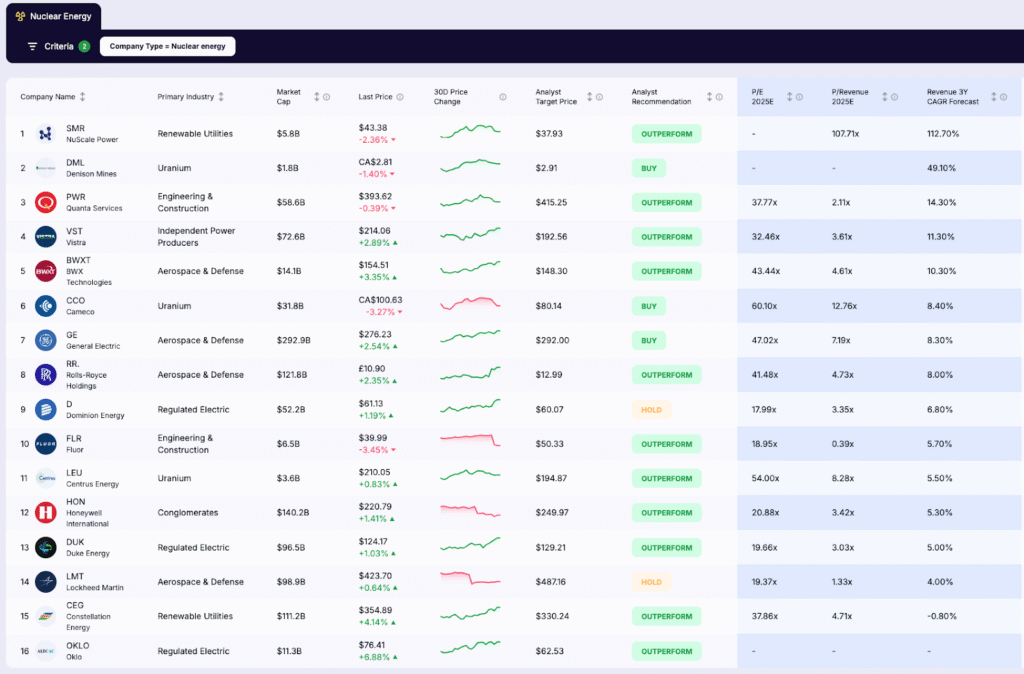
NuScale Power (SMR)
NuScale Power is a trailblazer in advanced nuclear technology, specializing in Small Modular Reactors (SMRs). Their flagship product, the VOYGR 12 SMR power plant, features 12 NuScale Power Modules, each capable of generating 77 MWe, totaling up to 924 MWe of carbon free electricity. Their SMR design is notably the only one with U.S. approval, providing them with a significant regulatory head start in the market.
NuScale is actively pursuing large scale projects in Central and Eastern Europe, including a flagship initiative in Poland with KGHM Polska Miedź SA, targeting operational status as early as 2029. They also expanded into Africa in August 2024, signing an agreement with Ghana and Regnum Technology Group for Ghana’s first commercial nuclear project. While a pre revenue company from electricity sales, NuScale’s revenue jumped nearly ninefold to $13.4 million in Q1 2025, driven by initial technology sales and engineering work for the Romanian SMR plant. They posted a $35 million operating loss in Q1 2025, but held approximately $492 million in cash and equivalents as of March 31, 2025, bolstered by a $102 million stock sale, providing over three years of financial runway.
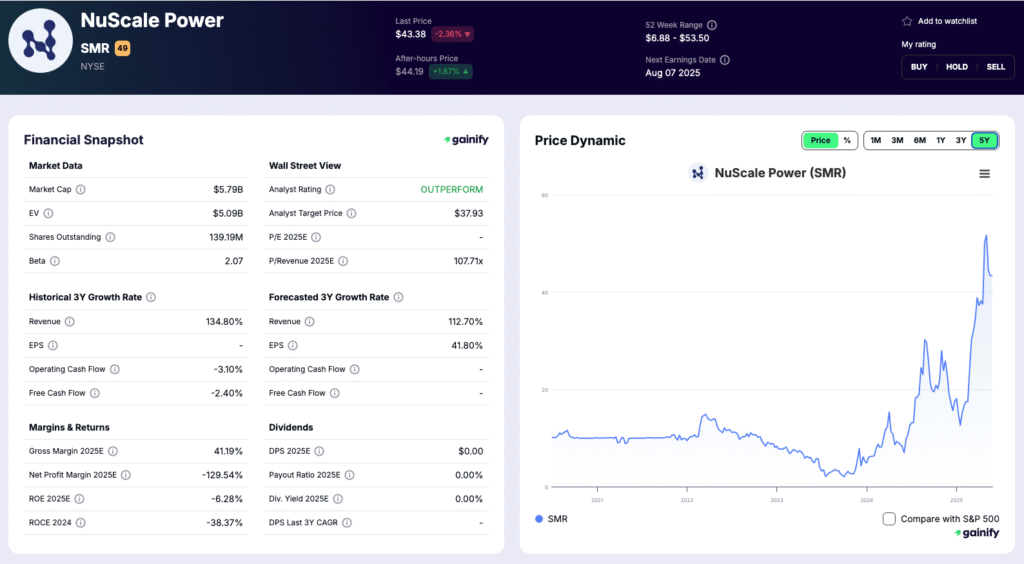
Denison Mines (DNN)
Denison Mines Corp. is primarily involved in the acquisition, exploration, and development of uranium bearing properties in Canada. Their flagship project is the Wheeler River uranium project, where they hold a 95% interest, located in the Athabasca Basin region in northern Saskatchewan. This project is considered the largest undeveloped uranium project in the infrastructure rich eastern Athabasca Basin.
Recent activities include the discovery of additional high grade uranium mineralization at McClean South in June 2025 and successful delineation at Gryphon. Denison also reported the first production from SABRE at McClean Lake in July 2025. The company’s Q1 2025 financial results highlighted continued advancement of the Phoenix Project.
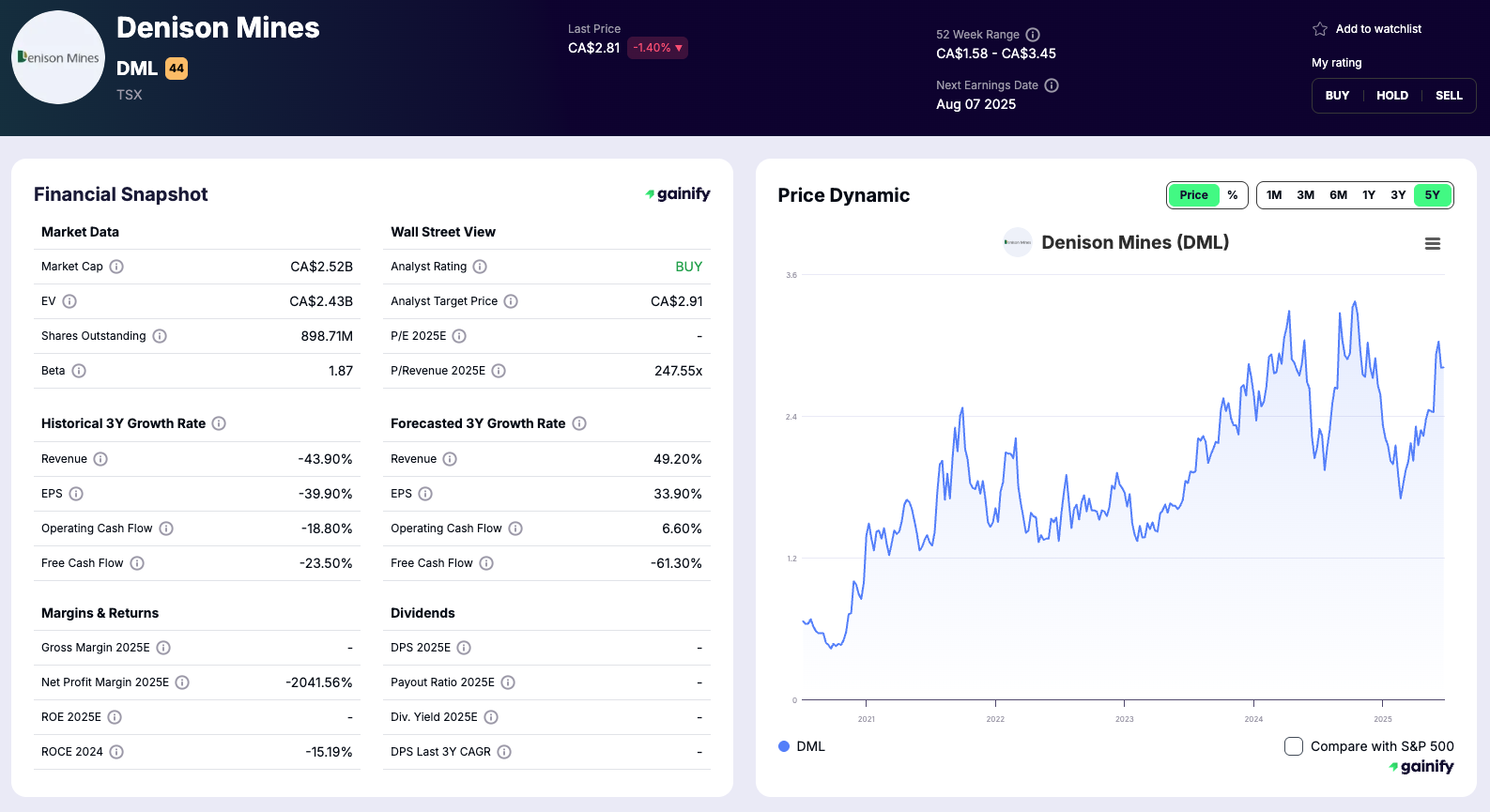
BWX Technologies (BWXT)
BWX Technologies is a leading provider of nuclear technology and components for both commercial and defense sectors. Their core business revolves around delivering specialized nuclear solutions. In January 2025, BWXT acquired Kinectrics Inc., a global service provider in the nuclear market, for $525 million, an acquisition expected to enhance its commercial operations in nuclear power and medical markets.
In December 2024, BWXT Canada Ltd. signed a memorandum of understanding with Westinghouse Electric Company to support global nuclear new build projects by manufacturing components for Westinghouse’s AP1000 and AP300 reactor designs. Additionally, in November 2024, BWXT completed the acquisition of Aerojet Ordnance Tennessee, expanding its capabilities in producing specialized metals and high strength alloys for the defense sector. As of the provided data, BWXT has a market capitalization of $14.1 billion, a one year performance of +67%, and reported an annual revenue growth of ~12.0%.
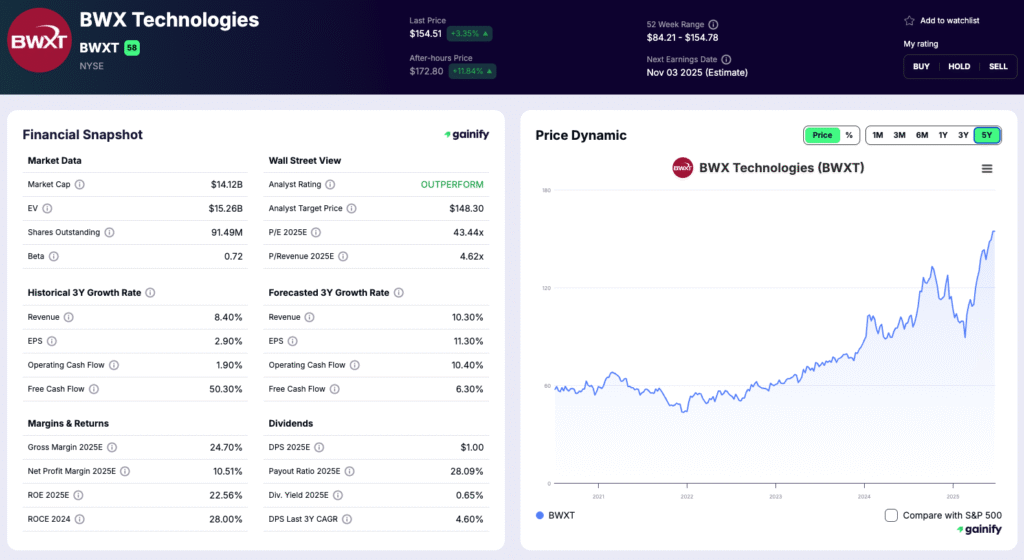
Cameco (CCO)
Cameco Corporation is recognized as one of the largest global providers of uranium fuel, essential for powering a safe and secure energy future. Their competitive position is underpinned by controlling ownership of the world’s largest high grade uranium reserves and low cost operations. Cameco also holds significant investments across the nuclear fuel cycle, including ownership interests in Westinghouse Electric Company and Global Laser Enrichment. Utilities worldwide rely on Cameco to provide global nuclear fuel solutions for the generation of safe, reliable, carbon free nuclear power.
The company reported earnings per share of $0.71 for Q2 2025, with revenue of $880 million, representing a 46% increase compared to the same quarter last year. The company has a market capitalization of $43.8 billion and a price to earnings ratio of 60.0x for 2025E. Analysts generally have a positive outlook, with an average rating of “Buy” and a consensus price target of $80.14.
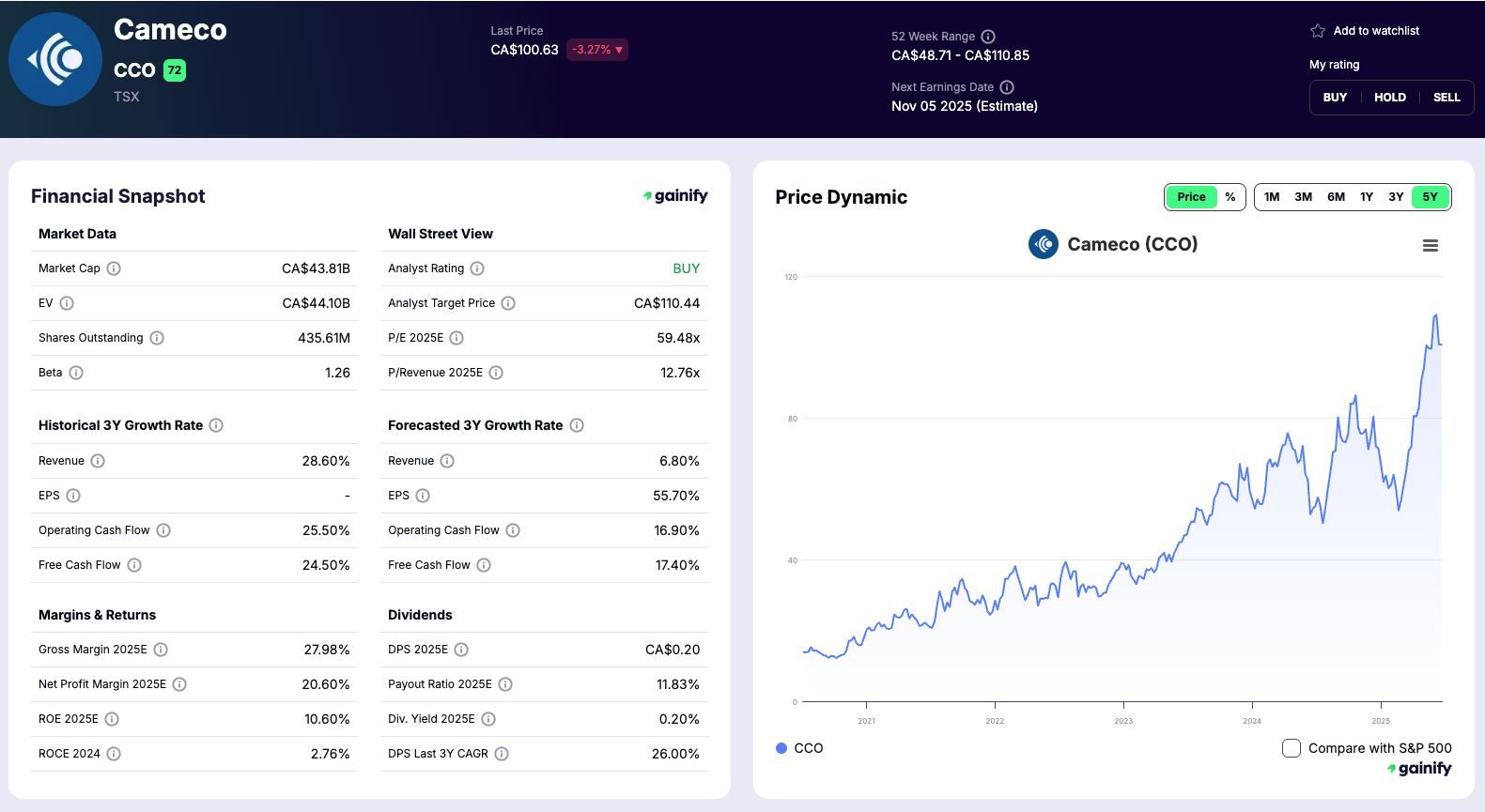
Rolls-Royce Holdings (RR.)
Rolls-Royce is expanding into civil nuclear energy through its dedicated SMR division. Its small modular reactor design, currently undergoing regulatory review in the UK, aims to deliver 470 MW per unit with faster, modular construction. Backed by UK government funding, Rolls-Royce SMR targets commercial deployment in the early 2030s. The company also supplies nuclear propulsion systems for the Royal Navy.
The company reported “blockbuster” results for 2024, with operating profit growing by 55% and sales increasing by 16%. Rolls Royce boosted its guidance in late February 2025 after achieving key initiatives ahead of schedule. The company reinstated shareholder dividends and announced a £1 billion share buyback, and is well ahead of its goal of quadrupling profits by the end of 2028. Rolls Royce is projected to grow its adjusted earnings by ~30% in FY25 and 16% in FY26, supported by 27% and 11% respective revenue expansion.
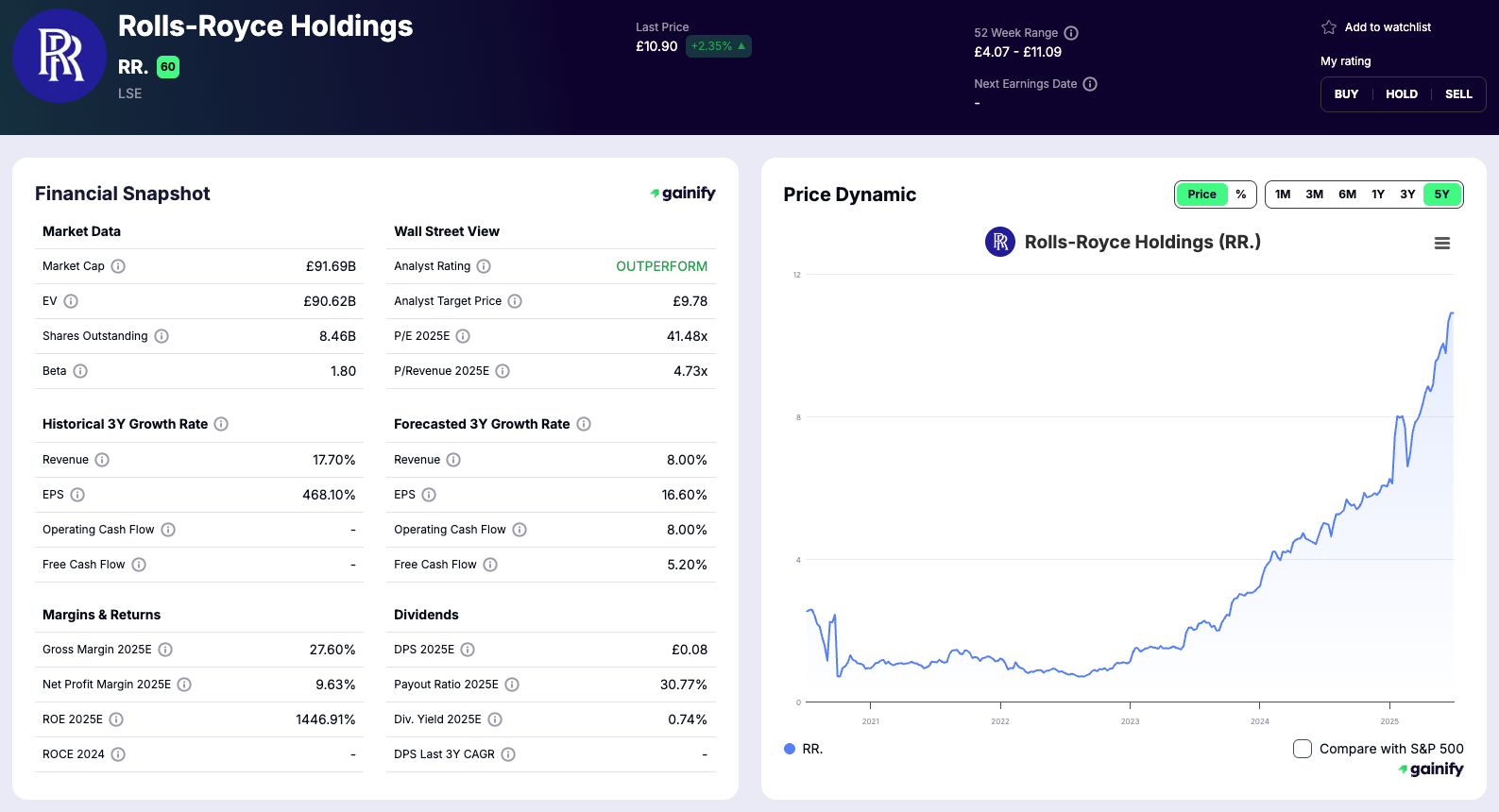
Dominion Energy (D)
Dominion Energy is a predominantly regulated utility company, with approximately 90% of its earnings derived from electric and gas utilities subject to state regulation in Virginia, North Carolina, and South Carolina. The company is constructing a rate regulated 5.2 GW wind farm off the Virginia Beach coast.
In July 2025, Dominion Energy received regulatory approval to extend the operations of its V.C. Summer Nuclear Station for 20 years. The company also announced its First Quarter 2025 Earnings Results in May 2025 and declared a quarterly dividend of 66.75 cents. As of July 28, 2025, Dominion Energy has a market capitalization of $52.2 billion and a forward dividend yield of 4.4%. Their trailing twelve month revenue was $14.46 billion, with a net income of $2.12 billion.
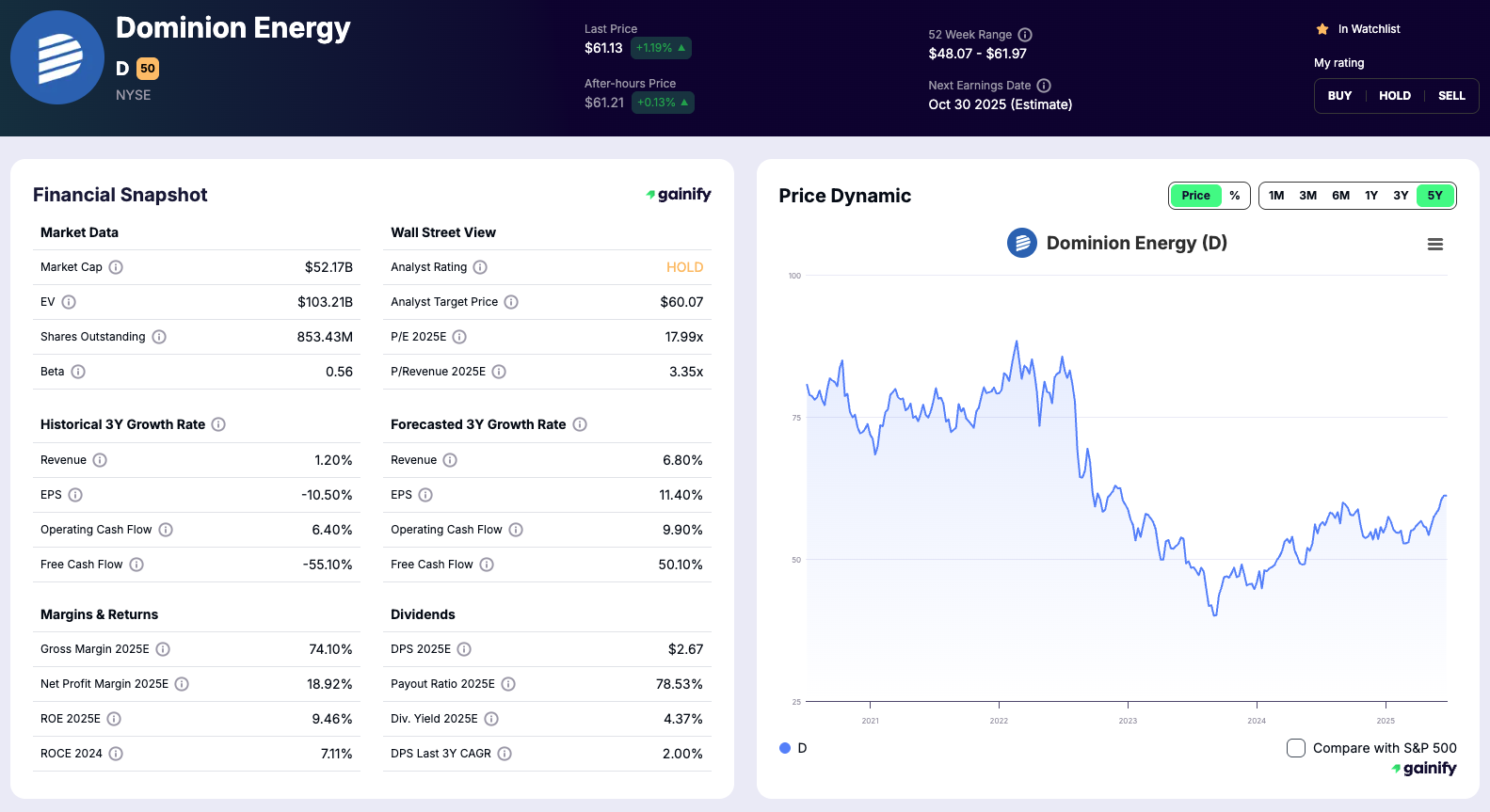
Centrus Energy (LEU)
Centrus Energy Corp. is one of the leading nuclear fuel suppliers specializing in High Assay Low Enriched Uranium (HALEU). They are actively enhancing U.S. nuclear fuel production capabilities. In December 2024, their subsidiary, American Centrifuge Operating LLC, received a U.S. Department of Energy (DOE) award to expand domestic Low Enriched Uranium (LEU) production.
Additionally, Centrus announced a $60 million investment to resume and expand centrifuge manufacturing at its Oak Ridge, Tennessee facility, supporting future uranium enrichment at its Piketon, Ohio plant. In October 2024, the company secured a DOE contract to produce HALEU for advanced reactors, solidifying its role in meeting growing U.S. demand for nuclear fuel and reducing reliance on foreign uranium sources.

Honeywell International (HON)
Honeywell International, through its Federal Solutions division, operates four sites for the U.S. Department of Energy (DOE) and National Nuclear Security Administration (NNSA). These sites are central to the nation’s security, nuclear deterrence, and energy independence. These include Sandia National Laboratories, Oak Ridge Reservation, Kansas City National Security Campus, and he Savannah River Site.
Honeywell’s mission is to deliver strategic outcomes for its partners by driving optimal performance and operational excellence, upholding the highest standards in efficiency, safety, and mission success. They leverage the Honeywell Forge data platform, expertise in quantum computing, and the Honeywell Operating System to drive technical performance in national security applications. They also apply commercial best practices to their federal government customers, focusing on making their businesses safe, secure, and more sustainable.
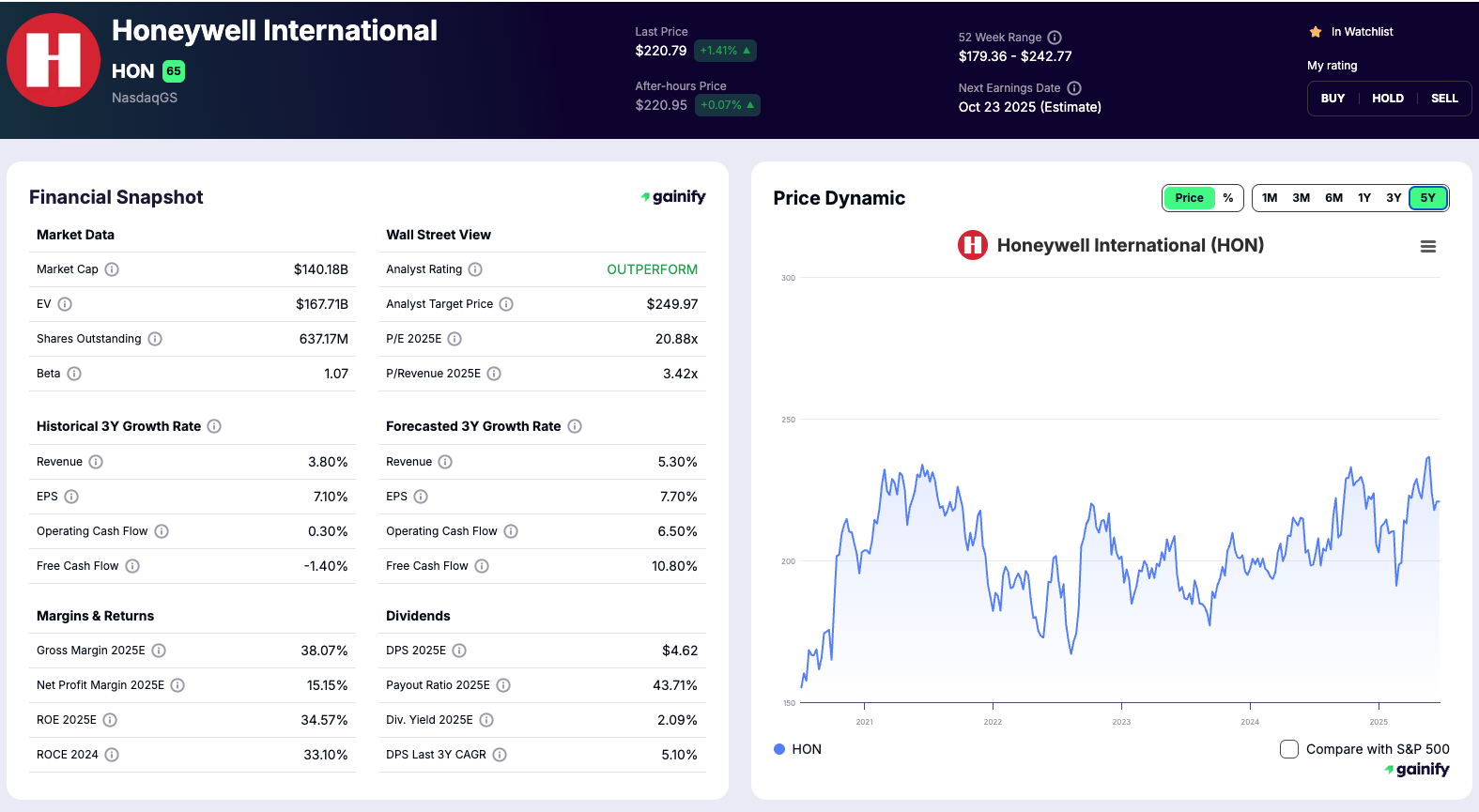
Duke Energy (DUK)
Duke Energy is a major energy company based in Charlotte, North Carolina, operating as an energy company across the United States. They own 58,200 megawatts of base load and peak generation in the United States, distributing electricity to 7.2 million customers. Nearly half of Duke Energy’s Carolinas generation comes from its nuclear power plants.
Duke Energy’s total revenue increased from $22.37 billion in 2015 to $30.36 billion in 2024. In 2024, the company’s revenue growth was 4.46% and Duke Energy is expected to grow at a similar rate for the next 3 years. Duke Energy reported a net income attributable to common shareholders of $1.365 billion in Q1 2025.
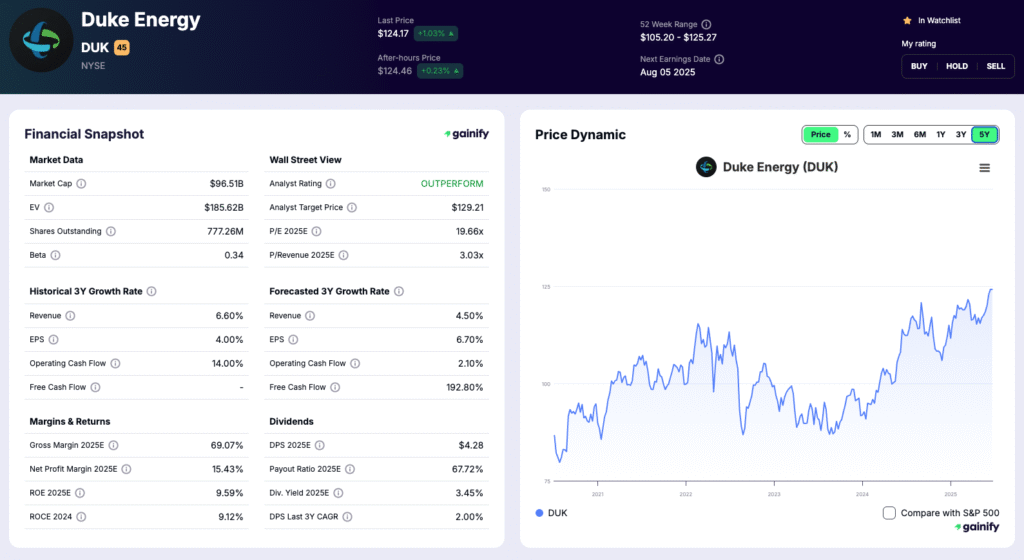
Lockheed Martin (LMT)
Lockheed Martin’s Skunk Works team has been exploring compact nuclear fusion technology, aiming to create a highly efficient and scalable energy source. Their approach seeks to replicate the fusion process that powers the sun using a compact magnetic confinement system. The concept, sometimes referred to as a high-beta design, proposes a much smaller footprint compared to traditional tokamaks, potentially enabling reactors compact enough for mobile or modular applications.
While initial announcements projected rapid development timelines, no functional prototype has been publicly demonstrated to date. However, Lockheed continues to invest in advancing fusion technology, which, if successful, could one day be used to generate electricity or power propulsion systems. The company’s broader portfolio spans advanced aerospace and defense technologies, including aeronautics, missiles and fire control, rotary and mission systems, and space-based platforms.
Constellation Energy (CEG)
Constellation Energy is the largest producer of clean power in the U.S., operating over 20 nuclear reactors and responsible for approximately 10% of the nation’s nuclear power generation. Their core business revolves around providing carbon free electricity, with nuclear power being a key component due to its 24/7 output, negligible carbon footprint, and scalability, which is highly sought after by AI data centers.
Constellation Energy is making a significant move by acquiring Calpine in a $26.6 billion deal, which will expand their portfolio to include natural gas and geothermal plants crucial for flexible generation in high growth markets. Additionally, Constellation has secured a 20 year power purchase agreement with Microsoft, further integrating them into the AI infrastructure supply chain. Financially, Constellation Energy is described as sturdy, generating $23.6 billion in trailing 12 month revenue and $3.75 billion in net income, resulting in a profit margin of 15.9%.
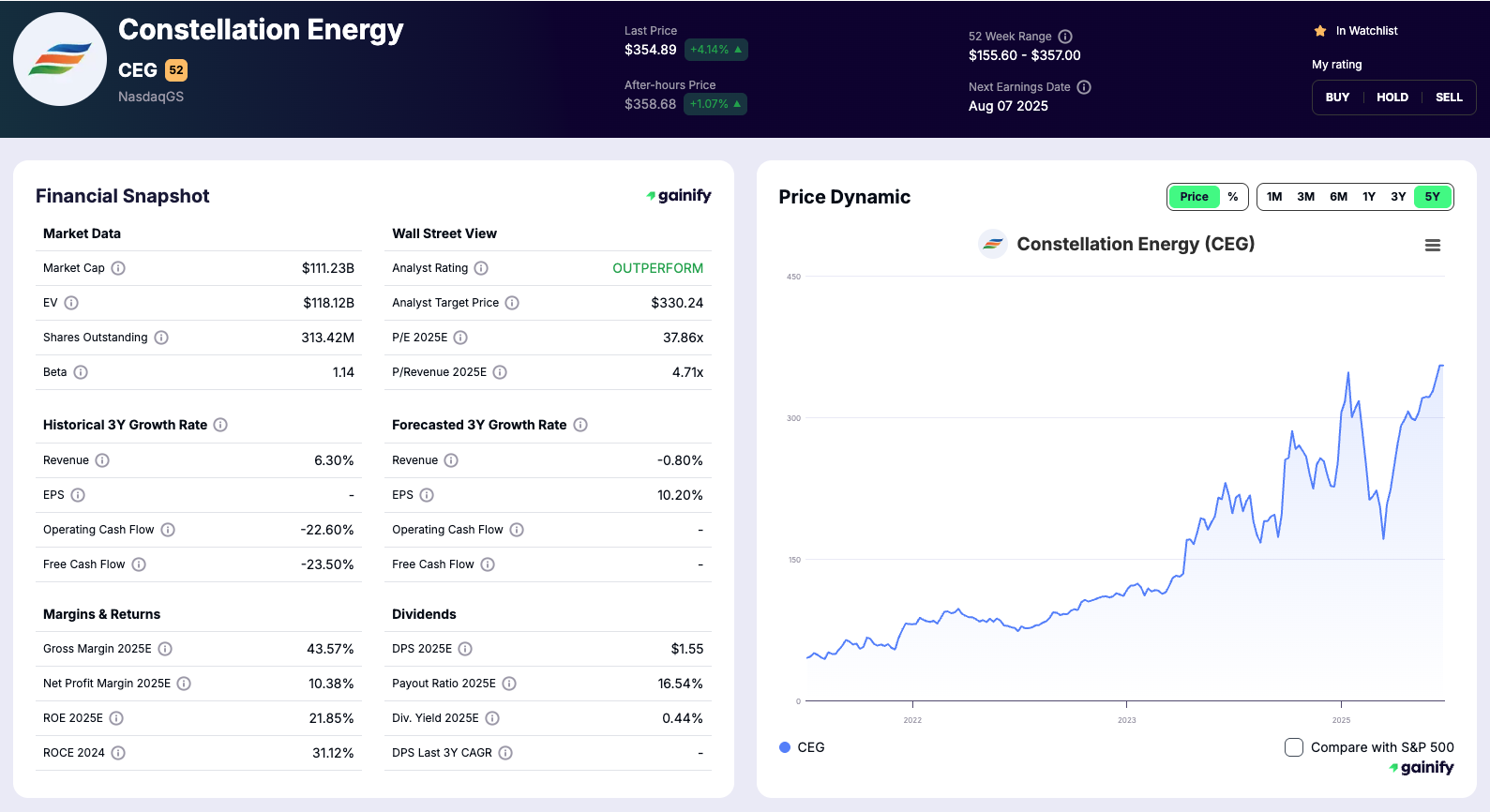
Vistra Corp (VST)
Vistra Corp is a holding company that provides electricity and power generation services. The company operates through several segments, including Retail, Texas, East, West, Sunset, and Asset Closure, covering electricity generation, wholesale energy sales, commodity risk management, and fuel production.
In July 2025, Vistra’s Perry Nuclear Plant received a 20 year license extension, ensuring operations through 2046. The company also reportedly boosted capacity with a $1.9 billion gas plant deal and contract expansion in July 2025. Vistra was mentioned in articles about AI giants like Nvidia and Meta fueling a power play breakout, and its nuclear AI option drew inflows. Vistra’s Q2 2025 earnings call is scheduled for August 7, 2025.

Oklo (OKLO)
Oklo is a company aiming to commercialize small modular nuclear reactors. The company has attracted investors with two key partnerships: one with Liberty Energy Inc. and another with Vertiv. These alliances address energy needs for data centers, factories, and large utility users, blending Oklo’s advanced nuclear designs with dependable natural gas and modern cooling systems.
The partnership with Liberty Energy offers complete energy solutions, starting with Liberty’s natural gas systems for quick energy and transitioning to Oklo’s clean nuclear generation for long term stability. With Vertiv, a global leader in critical infrastructure for digital services, Oklo will develop new power and cooling systems for next generation data centers. A pilot demonstration at Oklo’s first Aurora reactor site will test how nuclear generated steam and electricity can directly support data centers and power cooling systems. Oklo has also made significant progress in nuclear technology by collaborating with national labs and the DOE on nuclear fuel recycling, and was the first company to receive a site use permit from the DOE for a commercial advanced reactor.
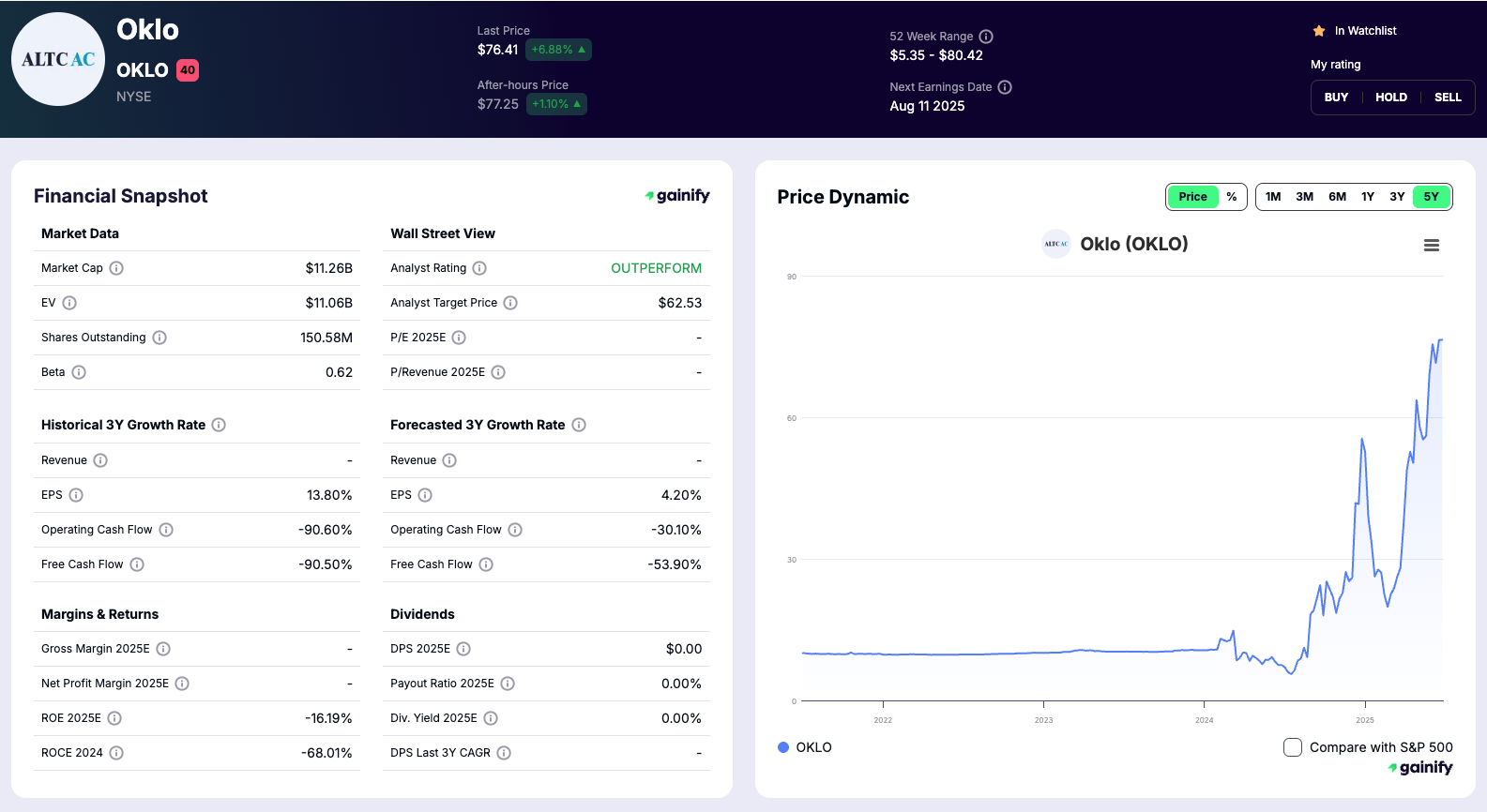
Considerations for a Nuanced Perspective
While the nuclear energy sector presents compelling opportunities, a comprehensive understanding requires acknowledging inherent challenges. These considerations are not necessarily deterrents, but rather aspects that warrant careful evaluation for a balanced perspective.
One significant area of concern revolves around nuclear waste management. The waste generated by nuclear reactors remains radioactive for hundreds of thousands of years, necessitating containment for up to one million years. Currently, there are no universally accepted long term storage solutions, and most waste is temporarily stored in above ground facilities that are nearing capacity. The industry is actively exploring more costly and potentially less safe storage options. Advanced reactor designs, such as Small Modular Reactors (SMRs) and Generation IV reactors, offer improved safety, efficiency, and waste reduction capabilities, with SMRs potentially reducing waste production by up to 30% compared to traditional reactors. Despite these advancements, a long term waste repository will still be needed. The Waste Management (WM) Symposia 2025 conference will focus on how the rapidly evolving digital world is transforming radioactive waste management, the nuclear industry, and clean up sectors, aiming for more efficient operations, improved human machine interactions, and enhanced data management.
Public perception also remains a critical factor. Historical nuclear accidents, such as Chernobyl in 1986 and Fukushima in 2011, have left a lasting negative impact on public opinion, despite the industry’s strong safety record in many regions. Media coverage, often sensationalized, and the rapid spread of misinformation on social media can significantly influence public sentiment. To address this, the industry is prioritizing transparency and communication. This involves providing accurate and unbiased information through educational programs in schools and universities, public outreach activities, and online resources. Building trust requires regular public updates and reports on nuclear operations and safety, open decision making processes, and engagement with local communities and stakeholders. Polls over the last decade have generally shown increasing levels of support for nuclear energy, with three quarters of U.S. respondents favoring its use in 2024, up from about half in the 1980s and 1990s.
Regulatory hurdles and lengthy licensing processes have historically been significant barriers to nuclear project development. The technical complexity of nuclear power plants often leads to delays and cost overruns during construction. The industry is addressing these challenges through various strategies. Governments are implementing policies to streamline regulatory processes and provide financial incentives, such as the US executive orders aimed at accelerating nuclear deployment and speeding up regulatory approvals. Innovative financing models like Regulated Asset Base (RAB) and Contracts for Difference (CfD) are being adopted to de risk investments by ensuring stable revenue streams and distributing financial risks between governments and private investors. The ADVANCE Act in the U.S. is also mentioned as a policy driven accelerant for digital innovation in the industry.
Geopolitical factors also play a role in the nuclear energy landscape. The nuclear fuel cycle, particularly uranium mining and enrichment, can be influenced by international relations and supply chain vulnerabilities. However, the current global narrative has shifted from energy security to national security and energy dominance, leading countries to diversify their nuclear fuel supplies. For instance, developments include restarting uranium conversion at the Springfields site in the UK, new mines in Uzbekistan, and EU funding for French enrichment plant expansion. This strategic prioritization by governments can provide a layer of stability and financial backing that insulates projects from pure market economics.
Future Outlook: Beyond the Horizon
The nuclear energy sector is not static; it is a dynamic field characterized by continuous innovation and the emergence of groundbreaking technologies that promise to reshape the future of power generation. Beyond the widely discussed Small Modular Reactors (SMRs), a new generation of advanced reactor designs is gaining traction, offering enhanced safety, efficiency, and versatility.
Emerging Nuclear Technologies
Advanced nuclear reactors extend beyond traditional designs, offering the promise of safer, cheaper, and more efficient generation of emissions free electricity, along with heat for industrial processes. These technologies are categorized into advanced water cooled reactors, non water cooled reactors, and fusion reactors.
Molten Salt Reactors (MSRs) are a prominent example of non water cooled reactors, using molten salts as a coolant or dissolving the fuel directly in the molten salt coolant. MSRs boast inherent safety features, such as a negative temperature coefficient that reduces the reaction rate as temperature increases, and operate at low pressure, minimizing the risk of coolant leaks. They can operate at higher temperatures than traditional reactors, leading to increased efficiency and the potential for producing hydrogen and other chemicals. Research is exploring new fuel cycles, such as the thorium uranium cycle, to improve fuel utilization and reduce waste production. Companies like TerraPower, Kairos Power, and Copenhagen Atomics are actively developing and manufacturing MSRs. The commercialization of MSRs is anticipated to occur in the early 2030s, though this timeline is subject to regulatory approvals and economic viability.
Fusion Reactors represent the most ambitious frontier in nuclear energy, theoretically generating energy by fusing two smaller atoms to create a larger one, releasing a massive amount of energy akin to the process that powers the sun and stars. This technology is still much further from commercial deployment compared to fission based reactors. However, significant private investment is flowing into fusion companies, with over $10 billion in cumulative equity investments, 80% of which are in U.S. based firms. The U.S. Department of Energy (DOE) has launched a “Bold Decadal Vision” to accelerate the viability of commercial fusion energy, aiming to demonstrate an operating fusion pilot plant, led by the private sector, in the 2030s. The international ITER project, under construction in France, is the largest fusion reactor project, with first plasma planned for 2033 2034 and deuterium tritium plasma operation targeted for 2039. While challenges remain in achieving sustained burning plasma and engineering for extreme conditions, the long term potential for nearly unlimited, inexpensive, and virtually waste free power is immense.
Frequently Asked Questions
Q: What is driving the renewed interest in nuclear energy?
A:The renewed interest in nuclear energy is primarily driven by two critical factors: the global imperative to achieve decarbonization goals to combat climate change and the increasing focus on energy security and independence. Nuclear power offers a reliable, carbon free baseload electricity source that can complement intermittent renewables and reduce reliance on volatile fossil fuels.
Q: How are AI data centers impacting the demand for nuclear energy?
A:AI data centers have an unprecedented and rapidly escalating demand for continuous, high density power. Nuclear energy, with its exceptionally high capacity factor and 24/7 carbon free output, is emerging as the preferred solution to meet these energy intensive needs. This creates a new, significant market for nuclear power and is accelerating the development and deployment of advanced reactors like SMRs.
Q: What are Small Modular Reactors (SMRs) and why are they important?
A: SMRs are advanced nuclear reactors that are smaller, more modular, and can be factory built and transported to site, reducing construction costs and timelines. They are important because they offer enhanced safety features, greater deployment flexibility, and can provide reliable, carbon free power for diverse applications, including remote communities and industrial facilities like data centers.
Q: What are the main risks associated with investing in nuclear energy stocks?
A:Investing in nuclear energy stocks involves several considerations, including the long term challenge of nuclear waste management, potential regulatory hurdles and lengthy licensing processes, and public perception concerns stemming from historical accidents. Additionally, the capital intensive nature of large scale nuclear projects can pose financial risks.
Q: How is the nuclear industry addressing these risks?
A:The industry is addressing these risks through various strategies. For waste, advanced reactor designs aim to reduce waste volume and toxicity, and digital technologies are improving management practices. To counter public perception, there is a focus on increased transparency, public education, and community engagement. Regulatory challenges are being addressed through government policies aimed at streamlining approval processes and providing financial incentives.
A Strategic Imperative for Tomorrow’s Energy Landscape
The nuclear energy sector is experiencing a major turning point, driven by a unique combination of global challenges and technological demands. Decarbonization and energy security continue to shape national energy policies, but a third powerful force is now accelerating the shift: the exponential growth in electricity demand from artificial intelligence.
AI data centers require uninterrupted, high-density power to operate efficiently. Traditional renewables cannot consistently meet these needs due to their intermittent nature. Nuclear energy, with its carbon-free baseload output and exceptional reliability, is emerging as the most viable solution to support the infrastructure behind AI, machine learning, and digital services.
Governments are stepping in to accelerate nuclear development. From streamlining regulations to funding advanced reactor designs and securing domestic fuel supply chains, public policy is aligning in favor of long-term nuclear expansion. Major infrastructure investments, power purchase agreements with tech giants, and national security strategies are creating a strong foundation for growth across the nuclear value chain.
Challenges remain, but innovation is rapidly addressing them. Concerns over waste, safety, and project timelines are being met with next-generation technologies, improved transparency, and new financing models. As AI drives a new industrial revolution and global climate goals intensify, nuclear power is becoming essential for both energy resilience and technological advancement.
compelling opportunity to participate in a fundamental reshaping of the global energy landscape, aligning portfolios with a future powered by reliable, clean, and secure atomic energy.
